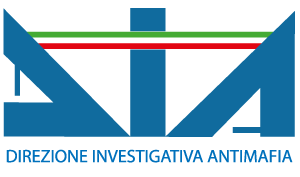 The DIA was set up in 1991 within the Department of Public Security in order to strengthen the state response to the mafia phenomenon.
The DIA was set up in 1991 within the Department of Public Security in order to strengthen the state response to the mafia phenomenon.
It is an inter-agency investigative body in charge of fighting against mafia-type organized crime groups. The activity of the DIA central and local offices is based on four main pillars:
- Analysis and administrative preventive activities
- Preventive investigations;
- Criminal police investigations;
- International relations for investigative purposes.
As far as the first pillar is concerned, the activities carried out by the DIA are the following:
- strategic analysis in order to:
- analyse the criminal phenomena and their evolution;
- identify the sectors subject to money laundering;
- anti-mafia preventive activity through the fight against mafia infiltration in public tenders;
- have access to and request data and information from private bodies.
- As far as the second pillar is concerned, the DIA is responsible for criminal police preventive activities since the DIA Director is entitled to propose the application of asset-related preventive measures;
- In the field of criminal police investigations, the DIA carries out investigations on its own initiative or on a mandate from of the Anti-Mafia District Directorates and cooperates with the National Anti-Mafia and Anti-Terrorism Directorate
- In regard to the international cooperation for investigative purposes, the DIA cooperates with foreign law enforcement agencies and manages important projects financed by the EU Commission.
The following powers are delegated to the DIA Director on a permanent basis:
- to carry out the relevant checks and have access to public administrations, public and economic bodies, banks, public and private credit institutions, trust companies, any other institution or company involved in savings and financial brokerage, professionals, auditors, casino operators, gaming and betting service providers, etc.
- to have access to the data and information on the mafia-type phenomenon stored in the data processing centre;
- to summon a person, as envisaged by article 15 of the Consolidated Law on Public Security;
- to receive communications by the intelligence services on the crimes connected to mafia-type activities.
